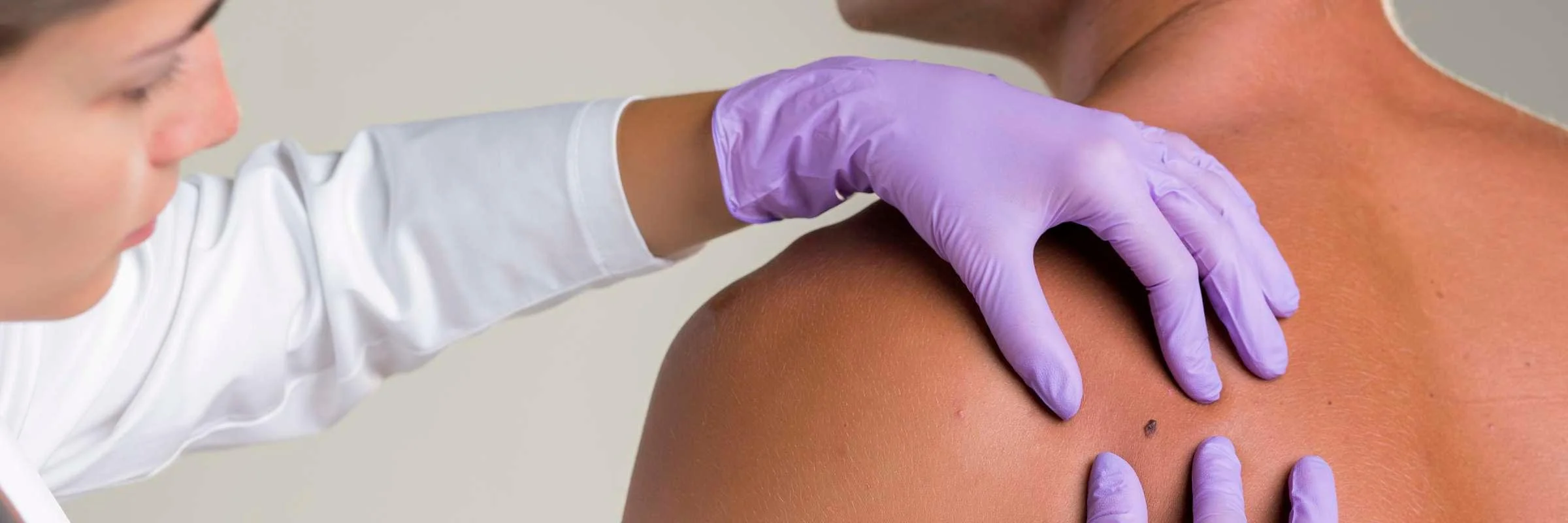WHAT TYPES OF MOLES EXIST?
Moles are medically called melanocytic naevus. When skin cells or melanocytes build up, they appear on the skin’s surface. Melanocytes are responsible for producing the pigment or melanin that gives the skin its color. These skin cells are the reason why moles are brown. Moles start to appear at the age of 5 and mainly occur during puberty. Generally, adults have about 30 moles all over their bodies. As the person gets older, they may start to lose moles.
There are different types of moles:
- Raised or compound moles
- Flat or junctional moles
- Flashy or intradermal moles
- Atypical or dysplastic moles
- Cancerous or melanoma moles
Moles are different in size, color and shape. Typical moles are symmetrical, well defined and even in color. Sometimes moles can have hair growing through them. With time, moles may start to lose their color and get fleshy.
Dysplastic moles resemble melanoma moles, but they are generally benign. They are irregularly shaped and colored and can be more significant than 5 mm. They are harmless but can turn into melanoma, so it’s vital to check them regularly or remove them if the dermatologist recommends so.
Generally, all moles are benign unless they change in color, shape or size.
Moles appear on almost all people, even babies. People with fair skin can have more moles than those with darker skin. Pregnant ladies tend to get new moles or their present moles can get darker.
WHY ARE MOLE CHECKS IMPORTANT?
Skin is the largest and most visible organ and it can be easily checked and kept healthy. With regular mole checks, people can prevent skin cancer or treat it on time. People with fair skin should check their moles more often, as well as people with many moles on their bodies, have a previous history of melanoma, or have family members with atypical moles.
It is vital to check all newly appeared moles and the ones that
- Look uneven and change their shape
- Became darker or have more than 2 colors
- Are itching, bleeding, flaking or crusting
- Increased in size
- Appear raised more from the skin
It’s important to notice these changes on time because they can happen really fast.
WHY ARE REGULAR MOLE CHECKS BENEFICIAL AND IMPORTANT?
Nowadays skin cancers are becoming more and more common. Therefore patients must check their skin and moles regularly. That’s an effective way of spotting any changes in moles and other skin lesions and preventing unwanted consequences. This is especially important for people with fair skin, those with many moles and previous history of melanoma.
Patients should examine all the new moles that appear in their 30s. Usually, these new moles or lesions are harmless and connected to aging. But if they appear atypical or abnormal, it’s essential to check them with a dermatologist.
At Lucia Clinic, the patients are consulted first with skin experts during their mole examinations. The skin experts can perform a full body check-up with a dermascopy. All the patient’s moles are thoroughly examined, and those that have recently changed their shape, color or size are especially paid attention to.
During the examination, Lucia’s dermatologist can also teach the patient how to monitor the moles that appear risky. The dermatologist may suggest the patient have the mole checked more often if necessary. This is true for patients with many moles or a previous history of skin cancer. If the dermatologist determines that some suspicious moles should be removed for further analysis, those moles can be removed during the same appointment. Or the patient can get some moles removed for cosmetic reasons.
Regular mole checks help the patient to keep their skin healthy and notice any unwanted mole changes on time.





